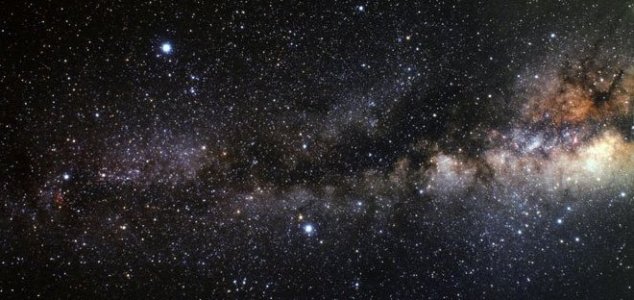Space & Astronomy
January 14, 2014 · 11 comments
11 comments

What is behind the stars' high speed ? Image Credit: NASA / A. Fujii
Over the last ten years astronomers have identified 18 of these stars originating from the super-massive black hole at the center of our galaxy, yet more recently they have also discovered 20 additional examples that don't appear to have come from the galactic core.
These sun-sized hypervelocity stars represent something of a mystery as there is no clear explanation as to how they came to be traveling so quickly. With speeds of more than one million miles per hour relative to the galaxy however it is only a matter of time before these super-fast celestial bodies end up leaving the Milky Way entirely.
Source: Popular Science | Comments (11)
Hypervelocity stars could leave the galaxy
By T.K. RandallJanuary 14, 2014 ·
 11 comments
11 comments
What is behind the stars' high speed ? Image Credit: NASA / A. Fujii
Astronomers have identified a mysterious group of 20 sun-sized stars travelling at high speed.
Hypervelocity stars can occur when a binary star system is caught by a black hole, which under the correct circumstances can cause one of the stars to be sucked in towards it and the other to be flung off out in to space at a speed fast enough to break free from the galaxy's gravitational pull.These sun-sized hypervelocity stars represent something of a mystery as there is no clear explanation as to how they came to be traveling so quickly. With speeds of more than one million miles per hour relative to the galaxy however it is only a matter of time before these super-fast celestial bodies end up leaving the Milky Way entirely.
Source: Popular Science | Comments (11)

The Unexplained Mysteries
Book of Weird News
AVAILABLE NOW
Take a walk on the weird side with this compilation of some of the weirdest stories ever to grace the pages of a newspaper.
Click here to learn more

Support us on Patreon
BONUS CONTENTFor less than the cost of a cup of coffee, you can gain access to a wide range of exclusive perks including our popular 'Lost Ghost Stories' series.
Click here to learn more
Ancient Mysteries and Alternative History
Space: Exploration and Spaceflight
Israel, Palestine and the Middle-East
Modern Mysteries, New Age and Prophecies
Total Posts: 7,768,307 Topics: 325,021 Members: 203,765
Not a member yet ? Click here to join - registration is free and only takes a moment!
Not a member yet ? Click here to join - registration is free and only takes a moment!





























Please Login or Register to post a comment.